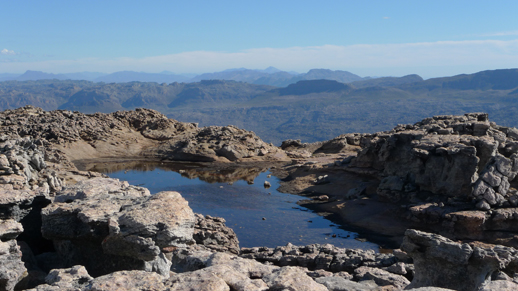In which, as the year comes to its end, our friends and collaborators look back and share their moments;

January – pushed from behind by some jolly South African rock climbers up a short chimney insurmountable to me; from the top of the Tafelberg the view west to the Atlantic (ships, silver pins, visible 70 miles away) and east to the Karoo (desert becoming atmosphere) stretches my head – the very width of vision – wider than anything my legs had been asked to do.
February – discover that Jackson Pollock (Jack the Dripper to his friends) once had a job cleaning bird droppings from statues in New York parks.
March – visit the widow of David Thomson, author of the seal lore masterpiece: The People of the Sea; she has left his jacket on the back of the chair at his desk in Camden Town; cannot stop myself thinking it looks like a seal skin.
April – watch a common crane in the Cambridgeshire fens (a new bird for my field patch) take flight after delicate high stepping though a ploughed field; it lifts off not with the swan’s judder into the air, nor the bustard’s stampede, but with a triple jumper’s leggy hop, skip and leap; airborne it is vast (something to answer the scale of the flat fens at last) like a Soviet transporter plane with tanks in its belly.
May – a blackbird farming in the garden: a female gathering twenty strands (eight inches long or more) of dried grass and ground elder roots from a pile of garden waste at the back door; it is hay making, its rick to be curved around its incubating body, this nest to become a wheel of grass, the sitting bird the shaft.

June – at Feodosia on the Black Sea coast of the Crimea a nightjar flies at dusk like a new Cyrillic letter cut from the hot air above the dock side railway track; the next day under scorching skies another sits on a dirt road in the heart of steppe, its liquid bulb eyes half shut; two muftis in mufti or flying carpets.
July – discover that Brancusi’s sculpture Bird in Space (in one of its bronze versions, I think) so baffled US customs officials on its arrival for an exhibition in New York in 1926 it was considered either a kitchen utensil or a piece of hospital equipment; both practical tools pleasing (and correcting) versions of what birds do and are to us.
August – the harvest is past, the summer is ended, and we are not saved, as it says in Jeremiah; but I have seen more goldfinches this year than ever before; on the fen taking off, they make a field of the cloth of gold.
September – peer upwards at swallows above me in the Exclusion Zone in Chernobyl looking for signs of aberrations and mutations: birds there have been found with white patches on their throats and bent outer tail streamers – cannot see them even though I know them to be there.
October – in Uppsala, by chance, on the morning when Tomas Tranströmer wins the Nobel Prize for Literature; the women behind the counter in the cake shop over the road from Linnaeus’s house have a radio on and hooray and clap as the news comes live from Stockholm; I buy cloudberry jam in honour of the day, the poet, and the cake-ladies who like poems.
November – make a radio programme that makes me cry when I hear it back (a first after 25 years on the job at BBC Radio): Andrew Motion’s wonderful sequence of war poems Laurels and Donkeys beautifully read by him and a cast of actors and stunningly set to music and assorted sounds by Jon Nicholls.
December – a Captain Beefheart binge, a year after he died, a playlist to last most of a day and to be enjoyed, sadly, alone: I only ever knew one woman who liked him and she was spoken for. Trout Mask Replica and Lick My Decals Off Baby (does that explain the women thing?) to be taken in nips like slivovitz, beer chasers throughout from Clear Spot and The Spotlight Kid.
Tim Dee is the author of The Running Sky and co-editor of The Poetry of Birds. He is writing a book about four fields around the world.